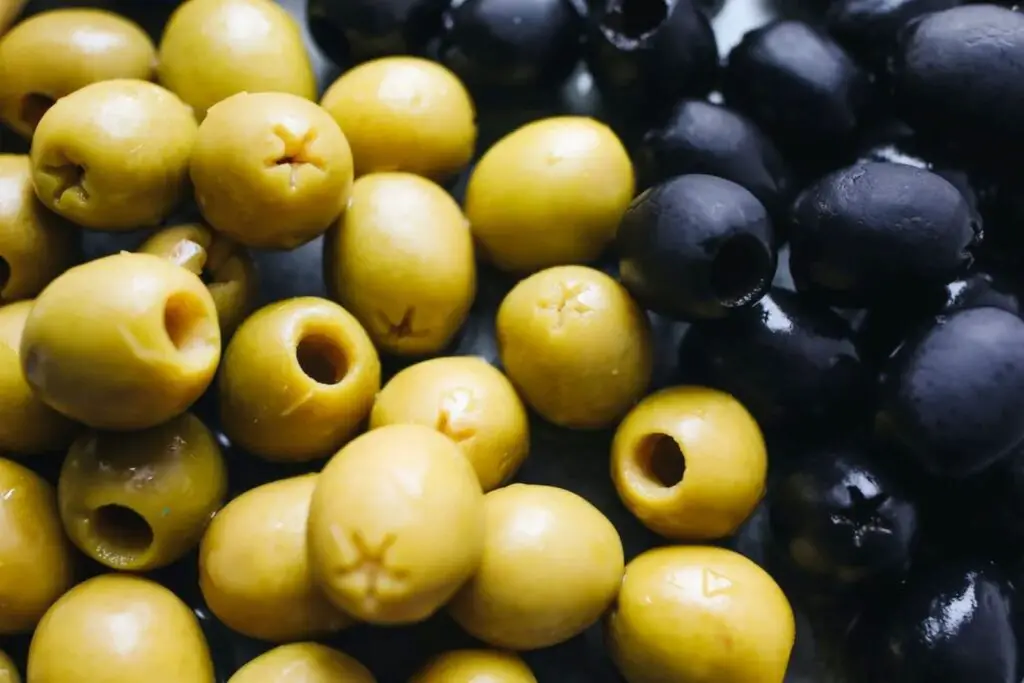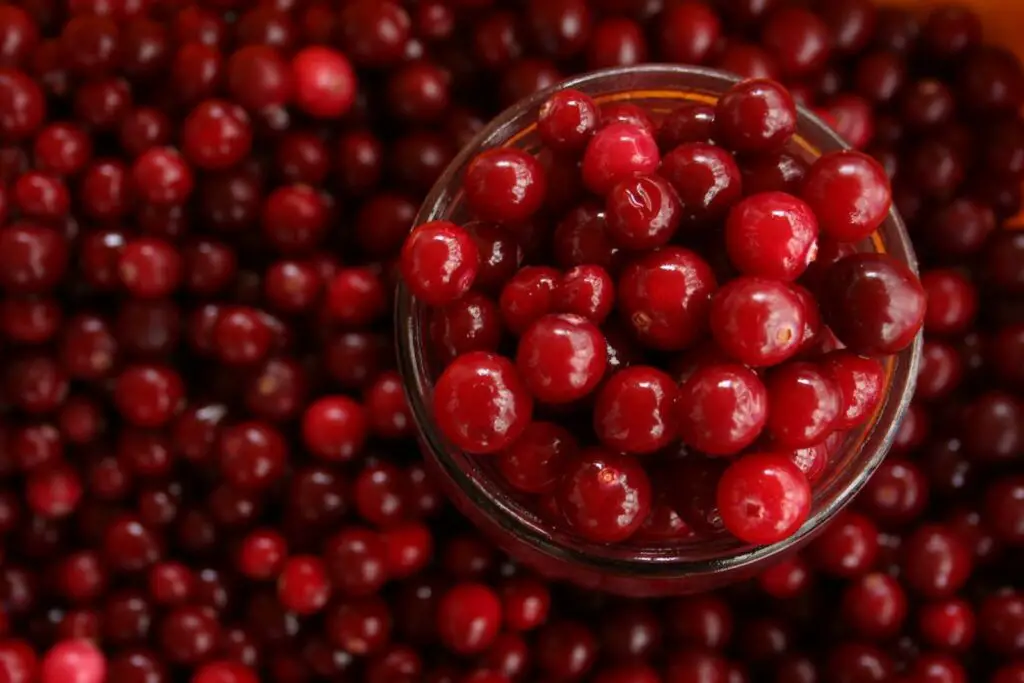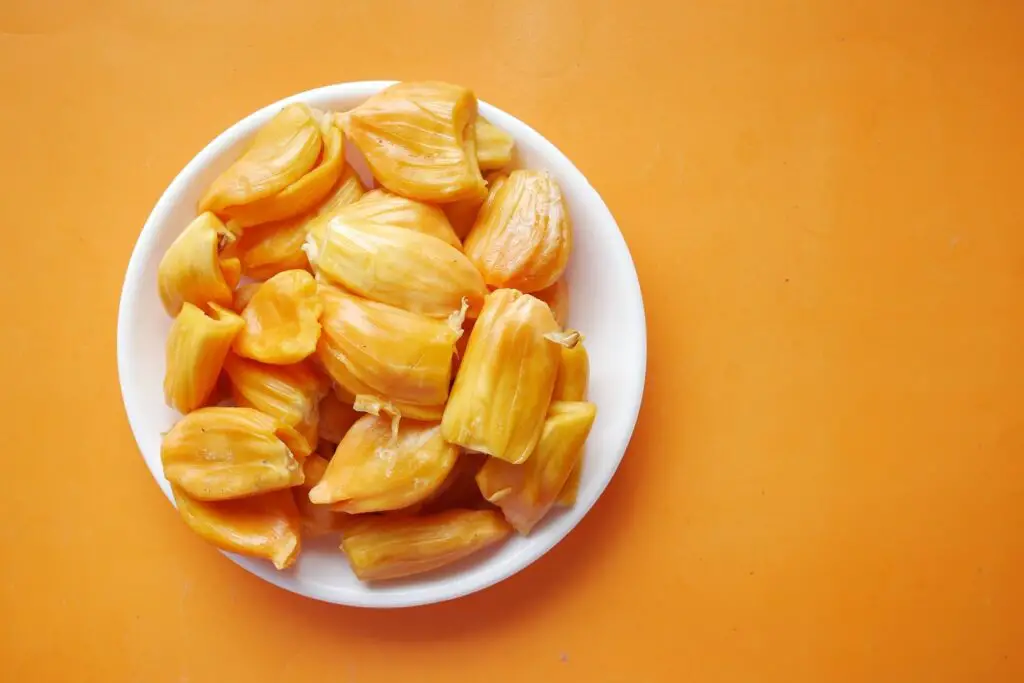
Durian is a tropical fruit renowned for its distinctive smell and rich, custard-like texture. Loved by many, this unique fruit is a delicacy in various parts of the world. However, durian’s availability can be limited by season, making it essential to learn how to freeze durian effectively. Freezing durian allows you to savor its delightful taste and aroma year-round. In this article, we’ll provide you with a step-by-step guide on how to freeze durian while preserving its exceptional qualities.
Here’s a comprehensive guide on freezing durian:
Step 1: Choose ripe durian
Selecting the right durian for freezing is a crucial first step to ensure that you preserve the best possible flavor and texture. Here’s a more detailed explanation of why choosing ripe durian is essential:
- Aroma: The aroma of durian is notorious for its strong and distinctive smell. While some may find it off-putting, it is a key indicator of the fruit’s ripeness. Ripe durian emits a powerful, sweet fragrance that can be detected from a distance. This aroma is a sign that the fruit has reached its peak ripeness and is ready for consumption. It’s this captivating scent that many durian enthusiasts find so irresistible.
- Texture: Ripe durian should yield slightly to gentle pressure when you press your fingers against the fruit’s outer shell. If the durian feels rock-hard, it’s likely underripe, and the flesh inside will be too firm and lacking in the creamy, custard-like texture that durian is known for. On the other hand, if the durian is excessively soft and mushy, it may be overripe, leading to a deteriorated texture and flavor.
- Color: The color of the durian flesh is another important indicator of ripeness. Ideally, the flesh should be a creamy, golden-yellow color. This hue signals that the durian is at its prime and boasts the perfect balance of sweetness and richness. Avoid durians with overly pale or greenish flesh, as they are likely underripe and will lack the desirable flavor and texture.
Step 2: Prepare the durian
Once you’ve selected a ripe durian, it’s time to prepare it for freezing. This step involves several important actions to ensure the durian is clean, safe to handle, and ready for freezing. Here’s a detailed explanation of how to prepare the durian:
- Washing the Durian:
Begin by washing the durian thoroughly under running water. This step is essential to remove any dirt, dust, or contaminants that may have adhered to the outer shell of the fruit. Durians are often harvested from trees and transported, which can result in surface impurities. Washing the durian helps eliminate these impurities and ensures that you’re working with a clean fruit.
- Removing the Thorny Husk:
Durian is famous for its intimidating, spiky husk, which can be a challenge to navigate. To access the delicious flesh inside, you’ll need to use a knife. Carefully cut through the husk, making an incision all the way around the fruit’s circumference. Be cautious while doing this, as the husk’s spikes can be sharp and prickly. It’s essential to handle the knife and durian with care to avoid any injuries.
As you cut around the durian, you’ll be able to gently pry apart the husk, revealing the inner treasure—the creamy, aromatic durian flesh. Take your time during this process to ensure you don’t damage the flesh or yourself. You may want to wear gloves or use a cloth to hold the durian securely as you work.
Step 3: Remove the flesh
After you’ve successfully prepared the durian by washing it and removing the thorny husk, the next crucial step is to extract the delicious durian flesh. Durian flesh is the prized part of the fruit, known for its rich, custard-like texture and distinct flavor. Here’s a detailed explanation of how to remove the flesh effectively:
- Gently Pry the Segments Away:
To extract the durian flesh, begin by gently prying the segments away from the central core. Durian is typically divided into several segments or pods, each containing a portion of the flesh and some seeds. You can do this manually using your hands or with the help of a clean utensil like a spoon or fork.
- Use Your Hands or a Clean Utensil:
Using your hands is a common and convenient method for removing durian flesh, especially if the fruit is soft and ripe. Simply insert your fingers into the segment and gently separate the flesh from the seeds and any fibrous material. Be cautious not to squeeze the flesh too hard, as it’s delicate and can easily lose its shape.
Alternatively, you can use a clean utensil such as a spoon or fork to scoop out the flesh. Insert the utensil between the flesh and the seeds, then lift and separate the two. This method is particularly useful if you prefer not to touch the durian directly, as the fruit can have a strong aroma that lingers on your hands.
- Remove Seeds and Fibrous Material:
As you extract the durian flesh, take care to leave behind any seeds or fibrous material. These parts are not typically consumed and can have a different texture and taste. The goal is to retain as much of the creamy, golden-yellow flesh as possible, as this is the prized part of the durian.
Can I freeze durian with the seeds still in it?
It’s recommended to remove the seeds before freezing durian. The seeds can have a different texture and are usually not consumed. Removing them allows you to freeze just the creamy, delicious flesh.
Step 4: Portion the durian
After you’ve successfully extracted the delicious durian flesh, the next important step is to portion it before freezing. Portioning the durian allows you to create manageable servings that are easy to use and enjoy later. Here’s a detailed explanation of why and how to portion the durian:
Why Portion the Durian:
Portioning the durian serves several practical purposes:
- Ease of Use: Smaller portions are more convenient when you want to enjoy durian. You won’t need to defrost a large quantity if you only want a small snack or a specific amount for a recipe.
- Prevent Waste: Portioning helps reduce food waste. By freezing the durian in individual servings, you can thaw only what you need, minimizing leftovers that might go to waste.
- Maintain Quality: Smaller portions freeze and thaw more evenly, ensuring that the durian maintains its desired texture and flavor. This prevents the entire batch from undergoing multiple freeze-thaw cycles, which can degrade the fruit’s quality.
How to Portion the Durian:
You have a few options for portioning the durian:
- Shape into Individual Servings: One simple method is to shape the durian flesh into individual servings using your hands. Form the flesh into small, uniform portions, roughly the size you’d like to consume in one sitting. This can be particularly useful if you plan to enjoy durian as a snack.
- Use Airtight Containers: Alternatively, you can place the durian flesh in airtight containers suitable for freezing. Choose containers that are appropriately sized for the portions you prefer. Fill each container with the durian, leaving a little space at the top to account for expansion during freezing. Make sure to seal the containers tightly to prevent freezer burn and maintain freshness.
- Freezer Bags: If you prefer, you can also use heavy-duty freezer bags to portion and store the durian. Place individual portions in separate bags, remove excess air, and seal them securely. Label each bag with the date to help you keep track of freshness.
Remember to choose a portion size that suits your consumption habits and preferences. Whether you opt for shaping individual servings or using containers or freezer bags, the goal is to create manageable portions that make it convenient to thaw and enjoy the frozen durian while preserving its quality.
Step 5: Package and seal
Once you’ve successfully portioned the durian, the next crucial step is to package and seal it properly. This step is essential for maintaining the durian’s quality during freezing and preventing freezer burn, which can affect its flavor and texture. Here’s a detailed explanation of why and how to seal and store the durian:
Why Package and Seal the Durian Properly:
Proper package and seal are vital for several reasons:
- Prevent Freezer Burn: Freezer burn occurs when food is exposed to air in the freezer, causing moisture loss and dehydration. It can result in a change in texture and flavor. By sealing the durian airtight, you create a protective barrier that prevents freezer burn.
- Maintain Freshness: Airtight containers or heavy-duty freezer bags help maintain the freshness of the durian, preserving its natural aroma, flavor, and texture. This ensures that the fruit remains as delicious as when you first froze it.
- Prevent Odor Contamination: Durian has a strong and distinctive odor. Proper sealing prevents the durian’s aroma from permeating other foods in your freezer, which can be a concern for those who find the smell overpowering.
How to Package and Seal the Durian:
- Airtight Containers: If you choose to use airtight containers, place the portioned durian inside, leaving a small gap at the top to accommodate expansion during freezing. Seal the container securely to create an airtight seal. It’s a good practice to use containers specifically designed for freezing, as they provide a better seal and protection against freezer burn.
- Freezer Bags: When using heavy-duty freezer bags, insert the durian portions into individual bags. Squeeze out as much air as possible before sealing the bags. A vacuum sealer can also be used for this purpose, ensuring a tight seal.
Step 6: Label and date
Labeling and dating your frozen durian containers or bags is a critical step in the freezing process. This simple yet essential action helps you keep track of the freshness of your durian and provides valuable information about the type or variety of durian you’ve frozen. Here’s a detailed explanation of why labeling and dating are important:
- Tracking Freshness:
Labeling the containers or bags with the date of freezing serves as a reference point. It allows you to know exactly when the durian was frozen. Over time, frozen foods can lose their quality, so knowing the age of your frozen durian helps ensure that you consume it while it’s still at its best.
- Identifying Different Durian Types:
If you have multiple varieties or types of durian, labeling helps you distinguish them easily. Durian comes in various varieties, each with its unique flavor and aroma. Knowing which type you’ve frozen can be helpful when you’re planning recipes or deciding which one to enjoy.
How to Label and Date:
When labeling and dating your frozen durian, follow these steps:
- Use a Permanent Marker: Choose a permanent marker with a fine tip to write on the containers or bags. This ensures that the labeling remains legible throughout the storage period.
- Date of Freezing: Write down the date when you froze the durian. Use the format that’s most convenient for you, such as “MM/DD/YYYY” or “DD/MM/YYYY,” so you can easily understand when the durian was frozen.
- Type or Variety: If you have multiple types or varieties of durian, make sure to specify the type on the label. For example, you might write “Musang King” or “D24” to indicate the variety. This helps you avoid any confusion and ensures you can differentiate between them.
- Label Clearly: Write the information clearly and legibly on the containers or bags. It’s a good idea to label both the top and the side of the container or bag for easy identification, even when they’re stacked in the freezer.
- Include Quantity: Optionally, you can also write down the quantity of durian in each container or bag, especially if you’ve portioned them differently.
Step 7: Freeze the durian
Now that you’ve properly prepared, portioned, sealed, labeled, and dated your durian, it’s time to freeze it to preserve its freshness and quality. Freezing durian is a crucial step in the process, and it requires careful attention to ensure that the fruit remains in optimal condition. Here’s a detailed explanation of how to freeze durian effectively:
- Placement in the Freezer:
Place the sealed containers or bags of durian in the freezer. It’s essential to position them flat on a level surface to allow for even freezing. Placing the containers or bags flat helps ensure that the durian freezes uniformly, preventing any variations in temperature that could affect its texture and flavor.
- Ideal Freezer Temperature:
The ideal freezer temperature for storing durian is approximately -18°C (0°F) or lower. Maintaining this temperature is crucial for preserving the quality of the durian. At this temperature, the fruit will remain well-preserved, with minimal degradation in taste and texture.
Why These Steps Are Important:
- Even Freezing: Placing the containers or bags flat in the freezer ensures that the durian freezes uniformly. This prevents any parts of the fruit from freezing at different rates, which can lead to inconsistencies in texture and flavor.
- Preservation of Freshness: Freezing at the recommended temperature of -18°C (0°F) or lower helps maintain the freshness of the durian. Lower temperatures slow down the degradation of the fruit’s quality, preserving its delightful taste and aroma.
- Prevention of Freezer Burn: By sealing the durian properly and placing it flat in the freezer, you minimize the chances of freezer burn. Freezer burn occurs when moisture is lost from the food, resulting in dry and potentially unpleasant texture. Proper sealing and flat placement help create a protective barrier against freezer burn.
Monitoring the Freezer:
While the freezing process itself requires minimal attention, it’s a good practice to periodically check and maintain your freezer’s temperature. This ensures that the durian, as well as other frozen items, remains at the optimal temperature for long-term storage.
How long can durian last in the freezer?
Durian can last in the freezer for up to 3-6 months without significant loss of quality when stored at the ideal temperature of -18°C (0°F). Beyond this period, the fruit remains safe to eat but may experience a decline in texture and flavor due to freezer burn. Proper sealing and labeling with the freezing date are essential for tracking its freshness.
Step 8: Thaw and enjoy
After successfully freezing your durian using the proper techniques, the final step is to thaw it when you’re ready to enjoy this tropical delight. Thawing durian correctly is essential to ensure that it retains its exceptional taste, aroma, and texture. Here’s a detailed explanation of how to thaw and enjoy your frozen durian:
- Transfer to the Refrigerator:
When you’re ready to enjoy your frozen durian, transfer the desired portion from the freezer to the refrigerator. Place it in a container or on a plate to catch any condensation as it thaws. Thawing durian in the refrigerator is the safest method because it maintains a consistent, controlled temperature that prevents any drastic changes in texture or flavor.
- Allow It to Thaw Overnight:
Thawing durian in the refrigerator should be done slowly to ensure the best results. It’s recommended to let the durian thaw overnight or for at least several hours. This gradual thawing process helps preserve the fruit’s natural texture and flavor.
Why These Steps Are Important:
- Maintaining Quality: Thawing durian in the refrigerator allows it to gradually reach a safe eating temperature while maintaining its quality. The slow thawing process prevents the fruit from becoming mushy or losing its characteristic creamy texture.
- Preserving Flavor: Rapid thawing methods, such as using a microwave, can cause the durian to heat unevenly and lose its unique flavor. Thawing in the refrigerator ensures that the durian retains its distinctive aroma and taste.
- Safe Thawing: Thawing durian at room temperature is not recommended, as it can lead to bacterial growth and spoilage. The refrigerator maintains a temperature that keeps the durian safe while it thaws.
Avoid Using a Microwave:
It’s essential to avoid using a microwave to thaw durian. Microwaving can heat the fruit unevenly and result in undesirable changes in texture and flavor. Additionally, microwaving durian can make the fruit release excess moisture, further affecting its quality.
Other related questions
Can I refreeze durian?
Refreezing durian is generally not recommended, as it can lead to a decline in quality. Once durian has been thawed, its texture and flavor may deteriorate if refrozen. However, if it was thawed in the refrigerator and remained at a safe temperature throughout, it can be refrozen once, but expect some loss in quality.
How do I know if the durian has gone bad after being frozen?
To determine if frozen durian has gone bad, first, inspect its appearance. If you notice any significant discoloration, off-putting odors, or signs of freezer burn (such as ice crystals or dry patches), it may have deteriorated. Additionally, taste a small portion; if the flavor is markedly different or unpleasant, the durian may have spoiled. Always prioritize food safety, and when in doubt, discard any frozen durian that exhibits signs of spoilage.
Is there a specific variety of durian that freezes better than others?
There is no specific variety of durian that universally freezes better than others, as the freezing process is primarily influenced by how well the fruit is prepared, packaged, and stored. However, some durian varieties are known to retain their flavor and texture better after freezing. Varieties like Musang King and D24 are often favored for their excellent freezing quality, but success ultimately depends on proper handling and storage techniques.
Can I use frozen durian in cooking and recipes?
Yes, frozen durian can be used effectively in cooking and recipes. Thaw the frozen durian as directed in a controlled environment to preserve its texture and flavor. Once thawed, you can use it in a variety of culinary applications, including smoothies, ice creams, cakes, and savory dishes, adding a unique tropical flavor to your creations.
Is there any difference between freezing the whole durian vs. just the flesh?
Freezing the whole durian presents challenges due to its large size and thorny husk. It’s more practical to freeze just the flesh, as it’s easier to handle, portion, and store. Freezing the flesh alone also allows for better preservation and prevents the husk from taking up unnecessary space in the freezer.
How can I prevent the strong odor of durian from permeating my freezer?
To prevent the strong odor of durian from permeating your freezer, use airtight containers or heavy-duty freezer bags to store the durian. These containers create a sealed environment that helps contain the aroma. Additionally, consider double bagging the durian for added protection, and ensure all containers or bags are sealed tightly to prevent air circulation that can carry the odor. Placing the durian in the back of the freezer, away from other items, can further isolate its aroma and minimize odor transfer.








